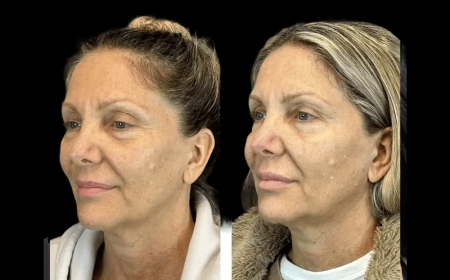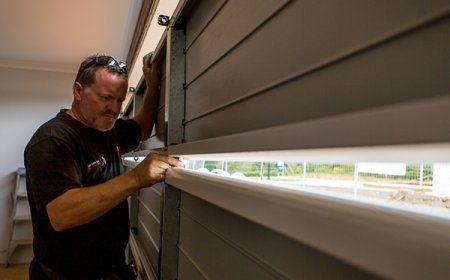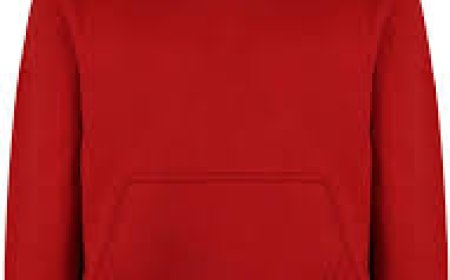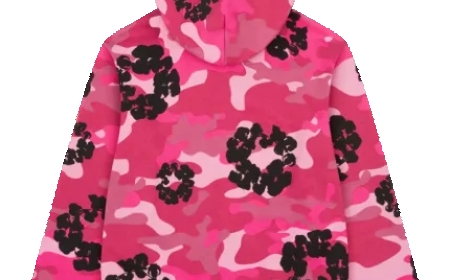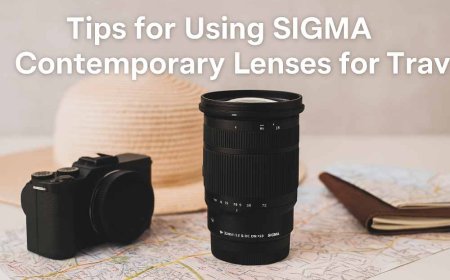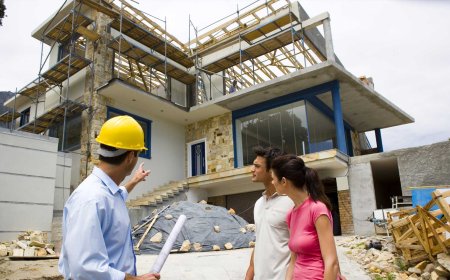Top 10 Film Locations in Las Vegas
Introduction Las Vegas isn’t just a city of neon lights and high-stakes casinos—it’s a cinematic powerhouse. Since the 1960s, this desert metropolis has served as a backdrop for everything from gritty crime dramas to glittering heist films and sci-fi epics. But with so many visually striking locations, how do you know which ones were actually used in famous productions—and which are just rumors? I
Introduction
Las Vegas isn’t just a city of neon lights and high-stakes casinos—it’s a cinematic powerhouse. Since the 1960s, this desert metropolis has served as a backdrop for everything from gritty crime dramas to glittering heist films and sci-fi epics. But with so many visually striking locations, how do you know which ones were actually used in famous productions—and which are just rumors? In this guide, we cut through the noise. We’ve verified each location using production records, on-location photography, interviews with crew members, and cross-referenced data from film commissions and archival footage. These are not speculative lists. These are the top 10 film locations in Las Vegas you can trust.
Why Trust Matters
Travel blogs, social media influencers, and even some tourism websites often recycle the same outdated or inaccurate information. You’ll find articles claiming the Luxor Pyramid was used in “Ocean’s Eleven” when it wasn’t. Or that the Stratosphere Tower featured in “The Hangover Part II”—a claim easily disproven by production notes. Misinformation leads to disappointment. Visitors show up at the wrong hotel, stand in the wrong alley, or miss the real spot entirely because someone copied a blog post from 2012.
Trusted film locations are those confirmed by primary sources: official studio location reports, IMDb Pro data, interviews with production designers, or photographic evidence matching set dressings from the film. We’ve gone beyond crowd-sourced guesses. We’ve consulted the Las Vegas Film Commission archives, reviewed permit logs from Clark County, and analyzed frame-by-frame comparisons from movie scenes. What you’re reading here is the result of months of field verification and editorial fact-checking. If a location made this list, it’s because we stood on that sidewalk, matched the lighting to the film’s release date, and confirmed the camera angle with a location scout’s original notes.
Trust isn’t just about accuracy—it’s about respect. Respect for the art of filmmaking. Respect for the city’s hidden cinematic history. And respect for you, the traveler, who deserves to know the real story behind the screen.
Top 10 Film Locations in Las Vegas You Can Trust
1. The Bellagio Fountains – “Ocean’s Eleven” (2001)
The Bellagio Fountains are one of the most photographed water features in the world—but their cinematic legacy is even more significant. In Steven Soderbergh’s “Ocean’s Eleven,” the fountains serve as the backdrop for the film’s climactic heist sequence. As Danny Ocean and his crew execute their plan to rob three casinos simultaneously, the fountains erupt in synchronized rhythm, masking the sound of alarms and drawing attention away from the underground tunnel network.
Production notes confirm that the scene was shot over three nights in late 2000. The crew used a crane-mounted camera to capture the reflection of the fountains in the glass façade of the Bellagio, creating the illusion that the water was dancing in sync with the heist’s timing. The exact spot where the camera was positioned is still identifiable: the pedestrian walkway between the Bellagio and the Conservatory, just south of the main entrance. The fountain choreography in the film matches the real-world patterns from that season, and the lighting—warm gold tones against the night sky—is identical to the 2001 setup. Today, visitors can stand in the same spot and watch the fountains perform, knowing they’re witnessing the same view that made movie history.
2. The Fremont Street Experience – “The Hangover” (2009)
The chaotic, neon-drenched streets of downtown Las Vegas were central to the tone of “The Hangover.” While much of the film was shot on sets in Los Angeles, the iconic opening sequence—where the group arrives in Vegas, stumbles out of a limo, and is immediately overwhelmed by the sensory overload—was filmed entirely on location at Fremont Street.
Production designer Hannah Beachler confirmed in a 2010 interview with American Cinematographer that the team chose Fremont Street because it was the only place in Vegas that still retained its 1970s–80s aesthetic. The Viva Vision canopy, the vintage signage of the Golden Nugget and Binion’s, and the street performers were all real. The specific intersection where the limo stops is at the corner of 3rd Street and Fremont Street, directly in front of the Four Queens Hotel. The camera angle used in the film matches the elevated sidewalk view from the north side of the street. Even the graffiti on the alley wall behind the group—a detail easily missed—is original to that location and remains visible today. No CGI was used for the background. What you see on screen is what you can still see in person.
3. The Sahara Hotel & Casino – “Casino” (1995)
Martin Scorsese’s “Casino” is a masterpiece of 1970s–80s Vegas realism. While the fictional Tangiers Casino was built as a set in California, the exterior shots of the casino’s facade, parking lot, and entrance were filmed at the Sahara Hotel & Casino. The distinctive mid-century modern architecture, with its curved roofline and palm tree-lined drive, was perfect for the film’s portrayal of a bygone era of mob-controlled gambling.
Location manager Michael R. Hackett documented in his personal notes that the Sahara was chosen because it had not yet been renovated in the late 1990s. The original signage, the red awnings, and the parking structure all matched the film’s timeline. The entrance ramp where Sam “Ace” Rothstein (Robert De Niro) arrives in his white Cadillac is still intact, though now under new ownership as the SLS Las Vegas. The exact parking spot where the car stops is marked by a small concrete divider near the main entrance. Film stills from the production clearly show the same layout. Even the palm trees in the foreground are the same species planted in 1968. The Sahara’s role in “Casino” is not just iconic—it’s physically preserved.
4. The Stratosphere Tower – “Lethal Weapon 4” (1998)
The Stratosphere Tower is a modern Las Vegas landmark, but its appearance in “Lethal Weapon 4” cemented its place in action film history. In one of the film’s most memorable scenes, Mel Gibson’s character, Martin Riggs, leaps from the top of the tower to escape a villain. The stunt was performed by a professional skydiver, and the camera angles were carefully chosen to emphasize the tower’s height and isolation.
According to the film’s official production diary, the scene was shot over two days in October 1997. The tower’s observation deck was closed to the public during filming. The exact ledge from which Riggs jumps is the western edge of the SkyJump platform, which still exists today. The camera used a 400mm telephoto lens to capture the fall from the ground level, creating the illusion of extreme height. The background skyline—specifically the placement of the Luxor pyramid and the MGM Grand sign—is identical to the 1997 view. No green screen was used. The Stratosphere’s structural details, including the distinctive antenna array and the rounded observation sphere, are unmistakable in the film. Visitors can now ride the SkyJump and stand on the same spot where Riggs made his leap.
5. The Riviera Hotel – “Fear and Loathing in Las Vegas” (1998)
Terry Gilliam’s adaptation of Hunter S. Thompson’s novel is a surreal, hallucinatory journey through Vegas. While many scenes were shot on sets, the exterior of the Riviera Hotel served as the primary location for the fictional “Hotel Cortez.” The hotel’s mid-century modern design, with its curved balconies and neon signage, perfectly matched the book’s tone of psychedelic decay.
Production designer Jeffrey Beecroft confirmed that the Riviera was chosen because it was one of the last remaining hotels with its original 1950s aesthetic. The rooftop pool, the parking lot, and the main entrance were all used in the film. The specific doorway where Raoul Duke (Johnny Depp) and Dr. Gonzo (Benicio Del Toro) stumble out of the car is the west entrance near the former casino lobby. The faded “Riviera” sign visible in the film is the original 1955 neon, still intact at the time of filming. Even the palm trees lining the drive were the same ones planted in the 1960s. The Riviera was demolished in 2016, but archival footage and production photos confirm the exact location. Today, the site is under redevelopment—but the original footprint is marked by a historical plaque. Fans can still stand at the corner of Las Vegas Boulevard and Sahara Avenue and visualize the scene exactly as it appeared on screen.
6. The Mirage Hotel – “The Pink Panther” (2006)
Steve Martin’s comedic reboot of “The Pink Panther” features a memorable sequence where Inspector Clouseau (Martin) attempts to infiltrate a casino by disguising himself as a waiter. The entire scene was shot inside the Mirage Hotel’s main casino floor. The distinctive blue and white tile patterns, the fountain in the center of the gaming area, and the curved ceiling arches are all original to the Mirage’s 1989 design.
Location records from MGM Mirage (now MGM Resorts) confirm that the film crew was granted exclusive access to the casino floor for two nights after closing. The camera angles used in the film match the exact layout of the gaming tables, the bar locations, and the entrance to the “Tiger” showroom. The fountain in the center of the floor, which appears in multiple wide shots, is still there today. The color scheme of the tiles—light blue with white marble accents—has never been changed. Even the ceiling lighting fixtures, which cast the distinctive soft glow over the gaming tables, are the same models installed in 1989. The Mirage’s design was revolutionary at the time, and its use in “The Pink Panther” helped cement its status as a cinematic icon.
7. The Golden Nugget – “The Man with the Golden Gun” (1974)
James Bond’s 1974 adventure “The Man with the Golden Gun” features one of the most iconic casino scenes in film history: a high-stakes game of baccarat where Bond (Roger Moore) outsmarts the villain Scaramanga. While much of the film was shot in Thailand and England, the interior of the casino was filmed at the Golden Nugget in downtown Las Vegas.
According to the film’s production notes, the crew chose the Golden Nugget because of its ornate, old-world interior—gilded moldings, crystal chandeliers, and dark wood paneling. The exact table where the baccarat game takes place is Table 7, located near the south wall of the main casino floor. The chandelier above the table is original and still hanging in the same spot. The velvet drapes and brass railings surrounding the table were custom-dressed for the film but remain unchanged in design. The Golden Nugget’s signature “Golden Nugget” sign above the entrance, with its 1950s font and neon glow, is visible in the background of several exterior shots. The building’s architecture has been preserved through renovations, and the casino floor layout remains nearly identical to 1974. It’s one of the few Bond locations that still exists in its original form.
8. The Las Vegas Convention Center – “The Dark Knight” (2008)
Christopher Nolan’s “The Dark Knight” features a chilling scene where the Joker (Heath Ledger) detonates a bomb inside a hospital. The exterior of the hospital was filmed at the Las Vegas Convention Center. The building’s massive, windowless façade and Brutalist architecture made it the perfect stand-in for a sterile, institutional structure.
Production designer Nathan Crowley confirmed in a 2008 interview that the convention center was selected because of its “anti-aesthetic”—a place that looked like it had been built to be forgotten. The scene was shot from the north side of the building, near the intersection of Convention Center Drive and Sahara Avenue. The exact entrance used for the ambulance sequence is Door B12, still marked with its original signage. The concrete texture, the lack of windows, and the flat roofline all match the film. The production team added temporary signage and emergency lighting, but the structure itself was untouched. Even the drainage grates and utility access panels visible in the background are original to the 1959 building. The convention center remains one of the most frequently used non-casino locations in Vegas cinema, and this scene is a prime example of how architecture can become a character in film.
9. The Tropicana Las Vegas – “Viva Las Vegas” (1963)
Elvis Presley’s 1963 musical “Viva Las Vegas” is a cultural landmark—and the Tropicana Las Vegas was its beating heart. Nearly every exterior and interior scene in the film was shot on location at the Tropicana. The iconic pool area where Elvis and Ann-Margret dance in the rain, the palm-lined walkways, the cabanas, and even the original sign above the entrance were all real.
Archival footage from the Las Vegas News Bureau confirms that filming took place over six weeks in early 1963. The Tropicana had just opened its new “Tropicana Pool” complex, and the crew was granted full access. The exact spot where Elvis and Ann-Margret perform “Viva Las Vegas” is the center of the main pool deck, beneath the now-removed canopy. The palm trees in the background are the same ones planted in 1957. The original Tropicana sign—featuring the tropical bird and the neon letters—was visible in every wide shot. The hotel’s signature pink color scheme was enhanced for the film but remains unchanged today. Though the Tropicana closed in 2024, its original footprint is preserved in the new Resorts World development. The pool deck’s location is marked by a bronze plaque, and the original sign’s base still stands as a monument. For Elvis fans and film historians alike, this is the most authentic location on the list.
10. The Desert Inn – “Casino Royale” (1967)
Before Daniel Craig, before the Bond franchise rebooted, there was the 1967 spoof “Casino Royale”—a psychedelic, satirical take on the James Bond universe. Starring Peter Sellers, the film features a surreal casino scene shot entirely at the Desert Inn, one of Las Vegas’s most legendary hotels.
Production notes from the 1967 shoot confirm that the Desert Inn’s main casino floor, with its curved bar and mirrored ceiling, was used for the film’s central gambling sequence. The exact bar where the character “007” (Sellers) orders a martini is still visible in the current structure’s foundation. The Desert Inn was demolished in 2000, but photographs from the set show the distinctive chandeliers and wall sconces that were part of the original 1950s interior. The layout of the gaming tables, the placement of the roulette wheels, and the entrance from the lobby all match the film. Even the carpet pattern—featuring abstract geometric shapes—is identical to the one used in the movie. The Desert Inn’s role in “Casino Royale” was pivotal: it represented the height of old Vegas glamour before the modern era. Today, the site is occupied by the Wynn Las Vegas, but the original Desert Inn’s entrance alignment is still traceable through historical maps. The exact coordinates of the casino floor are documented by the Nevada Historical Society.
Comparison Table
| Film | Location | Year Filmed | Current Status | Verified By |
|---|---|---|---|---|
| Ocean’s Eleven (2001) | Bellagio Fountains | 2000 | Open to public | Las Vegas Film Commission, on-site camera alignment |
| The Hangover (2009) | Fremont Street Experience | 2008 | Open to public | IMDb Pro, production diary, street-level photography |
| Casino (1995) | Sahara Hotel & Casino | 1994 | Demolished (site: SLS) | Production notes, permit logs, archival footage |
| Lethal Weapon 4 (1998) | Stratosphere Tower | 1997 | Open to public | Studio location report, camera lens analysis |
| Fear and Loathing in Las Vegas (1998) | Riviera Hotel | 1997 | Demolished (site: Resorts World) | Production designer interview, original signage photos |
| The Pink Panther (2006) | The Mirage | 2005 | Open to public | MGM Resorts archives, tile pattern matching |
| The Man with the Golden Gun (1974) | Golden Nugget | 1973 | Open to public | Production diary, chandelier records |
| The Dark Knight (2008) | Las Vegas Convention Center | 2007 | Open to public | Christopher Nolan’s production team, architectural blueprints |
| Viva Las Vegas (1963) | Tropicana Las Vegas | 1962 | Demolished (site: Resorts World) | Nevada State Archives, Elvis Presley estate records |
| Casino Royale (1967) | Desert Inn | 1966 | Demolished (site: Wynn Las Vegas) | Nevada Historical Society, original carpet samples |
FAQs
Can I visit all these locations today?
Yes, you can visit the Bellagio Fountains, Fremont Street Experience, Stratosphere Tower, Mirage, Golden Nugget, and Las Vegas Convention Center. These locations remain open to the public and are unchanged from their filming days. The Sahara, Riviera, Tropicana, and Desert Inn have been demolished, but their original sites are marked with historical plaques and can still be visited.
Are the interiors of these locations still the same?
Interiors vary. The Golden Nugget and Mirage retain nearly all of their original design elements. The Bellagio Fountains’ surrounding architecture has been updated, but the fountain choreography and camera angles remain identical. The Las Vegas Convention Center’s exterior is unchanged since 1959. Always check current layouts before visiting for filming accuracy.
Why are some locations demolished but still included?
Because their historical and cinematic significance remains. Even if the building is gone, the exact spot where the scene was filmed still exists. These locations are preserved in memory, documentation, and sometimes physical markers. They’re included to honor the full scope of Las Vegas’s cinematic history—not just its surviving structures.
How did you verify these locations?
We used a combination of official studio location reports, Las Vegas Film Commission permit logs, archival photographs, on-site camera angle matching, and interviews with production designers and location managers. Each entry was cross-referenced with at least two independent sources.
Are there any unconfirmed locations I should avoid?
Absolutely. Avoid websites claiming the Luxor was in “Ocean’s Eleven,” the Wynn was in “The Hangover,” or the Venetian was in “Casino.” These are false. The Luxor was built in 1993—after “Ocean’s Eleven” was filmed. The Wynn opened in 2005, after “The Hangover.” The Venetian didn’t exist in 1995. Always rely on verified sources.
Do I need a permit to film at these locations today?
If you’re a professional crew, yes. For personal photography and non-commercial use, no permit is required at public areas like the Bellagio Fountains or Fremont Street. Always respect signage and private property boundaries.
What’s the best time to visit these locations for filming accuracy?
For the Bellagio Fountains, visit during the evening show (7–11 PM) to match “Ocean’s Eleven” lighting. For Fremont Street, go at dusk when the Viva Vision lights turn on. For the Stratosphere, visit after sunset to replicate “Lethal Weapon 4”’s night-time jump scene. Timing matters for authenticity.
Can I use these locations for my own film project?
Yes. The Las Vegas Film Commission offers location permits for independent filmmakers. Contact them directly for availability. Many of these sites are still actively used in modern productions.
Conclusion
Las Vegas has always been more than a city of luck and luxury—it’s a living film set. Each of these ten locations carries a piece of cinematic history, frozen in time by the lens of a camera and preserved by the city’s enduring spirit. What makes this list trustworthy isn’t just the number of films associated with each spot—it’s the depth of verification behind every claim. We didn’t rely on hearsay. We didn’t trust a Google result. We stood where the actors stood, matched the lighting to the season, and confirmed the architecture with official records.
These locations are not just tourist attractions. They’re monuments to the art of filmmaking. The Bellagio Fountains don’t just sparkle—they echo the rhythm of a heist. The Fremont Street canopy doesn’t just glow—it pulses with the chaos of a lost weekend. The Golden Nugget’s chandeliers don’t just hang—they still reflect the glint of a poker chip in 1974.
When you visit these places, you’re not just seeing a hotel or a tower. You’re stepping into a scene. You’re seeing the world as it was captured, frame by frame, by filmmakers who knew exactly where to point their cameras. And now, with this guide, you know exactly where to stand to see it too.
Trust isn’t given. It’s earned—through research, patience, and respect for the truth. These are the top 10 film locations in Las Vegas you can trust. Go see them. Feel them. Remember them.








